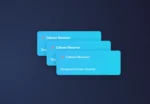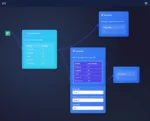
by tyler garrett | Jun 18, 2025 | Data Visual
In today’s competitive biotech landscape, effective interpretation and visualization of genomics data acts as the bedrock for breakthroughs in personalized medicine, agriculture innovation, and bioinformatics research. DNA sequencing platforms generate massive datasets that require advanced visualization tools and platforms capable of translating complex genetic information into insights that drive strategic decision-making. Decision-makers and researchers alike must understand the ecosystem of visualization techniques that facilitate understanding, guide analysis, and accelerate discoveries. In this guide, we will explore the robust landscape of genomics data visualization, showcasing emerging DNA sequence analysis platforms, the role of innovative analytics frameworks, and strategic best practices to harness visual insights effectively.
The Critical Role of Visualization in Genomics Research
Visualization is paramount in genomics research, especially given the complexity and high dimensionality of DNA sequence data. Effective data visualization platforms accelerate decision-making by transforming dense genomic information into clear, impactful insights. An intuitive visualization can significantly streamline the interpretation of genetic variability, structural genomic features, and complex evolutionary relationships. Platforms that leverage interactive data visualization offer scientists and researchers deeper exploration capability, enabling real-time querying and seamless data drill-downs for clearer understanding of underlying genetic patterns.
Biotechnology enterprises today confront mountains of genomic sequencing data, making visual analytics indispensable. Through effective visualization, complex relationships are uncovered, enabling researchers to identify significant genes associated with specific diseases, discover therapeutic drug targets, and optimize agricultural breeding strategies. For instance, visualizing gene expression data across different tissues or developmental stages helps identify potential biomarkers for disease prognosis. In parallel, applying advanced embeddings as a reusable semantic layer simplifies complex genomic datasets, easing visualization and interpretation of genetic interactions and pathways.
Moreover, successful genomics visualization not only enhances understanding for skilled scientists—it’s also a powerful mechanism for communicating findings to decision-makers and stakeholders. When complex genetic data is clearly visualized, decisions around resource allocation, funding potential, and research directions can rapidly move forward, empowering innovation at an organizational scale.
Evaluating DNA Sequence Analysis Platforms: A Strategic Approach
When choosing an appropriate DNA sequence visualization platform, a strategic approach is paramount. Decision-makers must look beyond mere visual appeal and prioritize scalability, performance, and integration capabilities that ensure adaptability in dynamic research environments. Platforms proficient in handling extensive datasets efficiently often leverage cloud-based solutions and high-performance analytics platforms, like Amazon Redshift, ensuring scalability, consistency, and real-time responsiveness for genomic datasets.
Additionally, strategic evaluation criteria should include assessing each platform’s ability to manage genomic data complexity, flexible data ingestion, and compatibility with existing research analytics frameworks. Implementing stable data management practices such as effectively implementing data version control practices across genomics datasets ensures reproducibility and traceability of research outcomes—crucial factors in rigorous scientific environments aiming at regulatory compliance and robust quality assurance.
Critically, decision-makers should also assess how effectively platforms can communicate complex genomic information. Platforms supporting the implementation of sophisticated encoding techniques such as typography as a data visualization encoding channel, multi-dimensional scaling, and comparative genomics visualizations hold significant advantages. Clear data representation accelerates analysis and enhances accessibility across multidisciplinary teams, aiding informed strategic decision-making and aligning stakeholders within biotechnology organizations.
Innovative Techniques and Approaches for DNA Visualization
Leading genomics data visualization platforms continuously evolve, incorporating innovative methods to tackle visualization challenges. Contextual visualization provides an approach to navigate genomics landscapes and provides researchers novel insights that inform biological conclusions. Techniques such as genome browsers, heatmaps for gene expression, comparative genomic tracks, and multi-scale visualization methods empower cross-scale analysis, enhancing the level of detail accessible to researchers. Multi-scale techniques like those described in multi-scale visualization for cross-resolution analysis offer researchers clear visualization of genetic data across different resolutions and meaningful comparisons for better-informed biological inquiry.
Another notable visualization trend in genomics is the use of visualization grammars such as the approaches introduced in visualization grammar implementations with Vega-Lite. By leveraging grammars, scientists can efficiently specify and construct custom visualization types optimized for unique genomic data insights without coding complexity. This approach drastically shortens the cycle between data query and visualization result and promotes extensive customization tailored explicitly to the use-case or stakeholder’s question.
Additionally, platforms emphasizing metadata collection and adaptive dashboards, exemplified in solutions discussed in improving Tableau server metadata collection, afford genomics researchers and decision-makers a powerful avenue to track usage patterns, performance issues, data lineage, and provenance. Advanced metadata visualization supports strategic oversight, enhances internal governance, and enables organizations to ensure consistency, accuracy, and transparency across all research and clinical workflows.
Tackling Data Integration and Processing Bottlenecks in DNA Analysis
One commonly overlooked yet significant area crucial to reliable DNA visualization is efficient and accurate data integration and processing. Complex genomic data analysis typically involves the integration of data from diverse sources, where efficient Extract, Transform, and Load (ETL) processes become critical for maintaining data quality, accuracy, and insight consistency. Understanding the role of ETL in DNA data integration and management is essential for genomic platforms seeking seamless visualization and simplified analytics pipelines.
Another central concern in large-scale genomic data visualization efforts is optimizing distributed processing systems to detect and handle unevenly distributed data, known as data skew. The strategic application of techniques and frameworks for data skew detection and handling in distributed processing guarantees balanced performance, resource utilization, and protects against faulty analytical outcomes. Effective data integration processes and the robust detection and management of data skew ensure that downstream genomic visualizations are accurate, timely, and reliably actionable.
Ultimately, robust DNA data visualization platforms must holistically approach the entire data lifecycle—including strategic integration, quality control, processing scalability, and security considerations—to unlock genomic insights that reliably drive innovation, improve patient outcomes, and foster entrepreneurial breakthroughs in genomics and bioinformatics.
Unlocking Genomic Potential Through Visualization Excellence
As the genomics field expands, organizations must position themselves strategically by deploying robust data visualization platforms capable of effectively navigating DNA sequencing complexity, ensuring data accuracy and integration excellence. Exceptional data visualization mastery empowers researchers and stakeholders to extract the maximum impact from genomic datasets, transforming massive volumes of complex genetic data into actionable, strategic insights that advance innovation and accelerate breakthroughs.
DNA sequence visualization platforms, backed by robust analytics frameworks and innovative integration methodologies, provide clear strategic advantages, signaling visionary investment into technological capabilities. Whether aiming to propel precision medicine advancements, accelerate breakthrough drug discovery, or optimize agricultural productivity, powerful genomics data visualizations enable transformational insight led strategies and informed decision-making that dramatically impacts competitive advantage and long-term growth.
At Dev3lop, we specialize in empowering organizations to harness the transformative potential of visualization technology, sophisticated analytics, and data innovation. Our deep expertise spans from genomics to biotech and enterprise-scale strategic analytics platforms. Ready to take strategic control of your genomics data? Connect with our analytics and Amazon Redshift consulting professionals today to unlock next-level innovation through visualization excellence.
Thank you for your support, follow DEV3LOPCOM, LLC on LinkedIn and YouTube.

by tyler garrett | Jun 18, 2025 | Data Visual
In the fast-paced world of airline operations, achieving peak efficiency means not only saving substantial costs but also improving the traveler experience and environmental impact. Flight optimization visualization tools offer airlines a crucial advantage, transforming complex flight data into strategic insights. Visualization allows airline leadership to easily glance at dense data sets, unlocking rapid, informed decisions. By visualizing analytics, airlines improve routes, reduce delays, identify fuel savings, and enhance operational workflows. At our consulting firm, we guide organizations through harnessing this potential, leveraging innovative analytics methodologies to navigate challenges seamlessly. Let’s explore how advanced visualization within airline operations analytics can elevate your organization’s decision-making prowess to new altitudes.
Understanding the Foundations of Airline Operations Analytics
Airline operations encompass numerous interdependent activities—ranging from fleet scheduling, maintenance oversight, and crew management to fueling strategy and compliance monitoring. Effective analytics begins with ensuring smooth data integration, starting from airline ticketing systems to real-time weather alerts. Here is where a robust implementation of ETL (Extract-Transform-Load) processes becomes fundamental. Proper ETL implementation assists airlines in aggregating data from disparate systems into centralized analytical frameworks, empowering data-driven collaboration and actionable decision-making.
Yet, data integrity doesn’t stop merely at ingestion. Effective operations analytics demand accurate data types, carefully managed to prevent critical analytical errors. Something as seemingly simple as an integer overflow can significantly skew analysis, causing misinterpretations and operational setbacks. To better understand and avoid potential pitfalls, leaders should familiarize themselves further with the psychology of data types related to analytics. Through an informed, strategic approach to handling data integration and data typing, airline organizations position themselves powerfully to leverage advanced analytics effectively and avoid costly mistakes.
Visualizing Data for Enhanced Operational Decision-Making
In the incredibly dynamic aviation industry, timely decisions save millions annually. Visualization technologies simplify intricate analytics, facilitating immediate insights into complex operational landscapes. Tools employing intuitive dashboards make flight paths, fuel usage, airport traffic dynamics, and turnaround times visible at a glance. This visibility enables airline operation managers to rapidly assess current conditions, adjusting flight operations before challenges escalate and become costly.
The effectiveness of visual analytics solutions greatly depends on usability, clarity, and accessibility. It’s imperative, therefore, that airline operation dashboards adopt industry-standard visualization accessibility guidelines and implementation techniques. Adherence to these guidelines ensures visualizations are easily interpreted by all stakeholders—fostering broader understanding, quicker adoption rates across teams, and elevated analytics literacy throughout the organization.
In parallel, the rise of sophisticated visualization grammar specification languages now empowers organizations to create highly customizable and data-rich visuals. Airline executives seeking greater clarity and adaptability should compare advanced visualization grammars carefully; our guide on visualization grammar specification languages highlights strategic considerations. Adopting appropriate visualization grammars nurtures rapid and precise analytics responses, ultimately fueling smarter, strategic pathway alterations in real time.
Harnessing Relational Theory and Normalization for Faster Processing
Visualization tools can only deliver value when paired with swift, responsive data processing. High-performance data visualization directly relies on efficient database structures and rapid query response times. That’s why airlines must leverage powerful relational theory frameworks and adopt strategic normalization techniques in their data management infrastructure.
By properly normalizing operational databases in alignment with proven relational theories and normalization approaches, airlines dramatically enhance critical response times for analytics queries generally tied to optimization metrics. Reducing data redundancy through normalization not only allows faster decision-making processes but also provides consistent analytical outcomes. This data normalization ensures optimal database performance and scalable analytics delivery even during heavy operational workloads, such as peak travel season scheduling or during unexpected events.
Investment in optimized relational databases enables airline companies to maximize analytical visualization platforms, facilitating real-time operational intelligence effortlessly translated into actionable insight effectively visualized to benefit strategic decision-making across the organization’s leadership.
Advanced Strategies: Integrating Batch and Real-Time Processing
Airlines increasingly rely upon mixed modes of data processing, where batch analytics merge seamlessly alongside real-time streaming. Ensuring data-processing approaches combine effectively to meet both strategic and tactical requirements calls for an intelligent implementation strategy like the Lambda architecture. By thoughtfully melding the detailed historical data insights from batch processing with immediate insights from real-time data streams, airlines harness the best of both worlds.
Lambda architecture enables visualization tools to dynamically reflect immediate external conditions while contextualizing them against historical trends effortlessly. This balanced perspective translates into critical operational advantages: immediate, informed decision-making based on live visualization data, ensuring precise actions during irregular operations or economic disruptions, and predictive planning for long-term growth. Integrative approaches like Lambda not only increase operational responsiveness but also position the enterprise as analytically resilient in face of volatile industry challenges.
With the right strategic architecture and visualization capabilities, airlines can proactively anticipate, visualize, and mitigate risks—transforming their analytics capability from merely descriptive to fully predictive and prescriptive.
Innovation in Data Schemas and Language-Aware Processing
Given the global nature of airline operations, effective analytics should naturally extend across diverse language groups and markets. Developing global, effective visual analytics relies heavily upon advanced multi-language schema management and language-aware data processing capabilities. The use of custom collators for language-aware data processing ensures your analytics visualizations fully represent international operations, avoiding common misinterpretations related to linguistic variations.
Moreover, modernizing data lake environments through advanced techniques like polymorphic schema handling, airlines can elegantly handle flexible, evolving data structures consistently and in real-time. This agility empowers visualization and analytics tools to continuously adapt and remain accurate, thereby allowing airline operations to pivot quickly amidst market uncertainties.
Additionally, managing and scheduling complex analytics data pipelines is fundamental for seamless visualization continuity. Investing in solutions focused strategically on data pipeline dependency resolution and scheduling ensures visual analytics remain consistently reliable. Automated pipeline management supports airline analytics professionals, reducing manual overhead and elevating organizational confidence in ongoing data-driven visualizations.
Optimizing Visualization with Advanced High-Performance Transformations
High-demand, insight-rich visualizations depend significantly on high-performance data transformations. Airline organizations increasingly focus on sophisticated code-generation strategies enabling high-performance data transformation pipelines to deliver elegant visualizations at remarkable speeds. Advanced data transformation frameworks effectively translate heavy computation workloads seamlessly into visually appealing and immediately insightful visual outputs.
This optimization focus doesn’t stop simply with transformations; airlines must continuously pursue operational analytics excellence through cutting-edge techniques. Adopting high-performance code-generation technologies ensures data is transformed at the speed that sophisticated visualization platforms require, enabling operations managers and executives alike to derive maximum operational value and better-informed decisions proactively.
Through strategic adoption of innovation-driven visualization methodologies like those we’ve explored here, airline operations analytics teams can rapidly leverage meaningful visual insights that reshape business strategy decisions every day.
Taking Airline Analytics Visualization to New Heights
At our consulting firm, we pride ourselves on guiding clients toward maximizing powerful data and analytics technologies such as visualization tools. To begin accelerating your organization’s analytics journey and capitalize on airline operational analytics visualization initiatives, discover more about our tailored Power BI consulting services. Let us help your airline soar to analytical success.
Thank you for your support, follow DEV3LOPCOM, LLC on LinkedIn and YouTube.

by tyler garrett | Jun 18, 2025 | Data Visual
In an era dominated by digital interactions and online visibility, decision-makers across industries must gain clarity into social media landscapes to better understand influence, trends, and digital authority. Social media influence mapping has emerged as a powerful methodology, combining advanced analytics and innovative visualization techniques, to shed light on authoritative voices, content trends, and network connections driving strategic decisions. Whether you’re in nonprofit management, corporate marketing, media, or public affairs, mastering the art and analytical science behind influence mapping is a competitive advantage. As you navigate today’s increasingly data-driven environment, visualizing digital authority can unlock key strategic opportunities, optimize engagement, and significantly boost your organization’s decision-making capability and competitive edge.
Why Social Media Influence Mapping Matters for Strategic Decision Making
For organizations striving to make sense of massive volumes of data flowing across social networks, understanding who holds influence and how ideas spread is paramount. Effective Social Media Influence Mapping empowers decision-makers to leverage precision insights and actionable outcomes through clearly visualized digital authority data. This capability is not just limited to commercial businesses—applying business intelligence for nonprofits by identifying influential advocates can yield heightened public awareness, targeted campaigns, and greater impact.
Advanced analytical tools ensure that social influence metrics can be correctly extracted, aggregated, and visualized clearly. Through intuitive analytics dashboards and visually compelling mapping such as network graphs, heatmaps, and streamgraphs for temporal flow visualization, complex influencer relationships and referral flows are turned into accessible, actionable insights. This allows teams to see precisely who influences specific topic areas, allowing tailored communications strategies, and streamlining critical resource allocation.
Ultimately, mapping digital influence transcends social media management; it informs marketing strategies, guides public relations decisions, and shapes executive-level strategic discussions. Comprehensive visibility into digital authority dynamics creates a foundation for confident decision-making, better governance, and faster response to market and cultural shifts.
Key Techniques in Digital Authority Visualization
Social Media Influence Mapping involves an intelligent combination of analytics, data processing, and innovative visualization techniques. Data scientists begin by tapping into robust social APIs capturing real-time user interactions and behavioral insights. Utilizing advanced querying, customized data pipelines, and sophisticated data warehousing mechanisms, teams can aggregate data efficiently through strategic use of analytics frameworks and methodologies, including leveraging databases and MySQL consulting services to manage high-volume, relational data efficiently.
Among critical analytic methods, measuring influence often involves evaluating key metrics—reach, impressions, engagement, and amplification. Effective data architects typically rely heavily on analytics-enabled data pipelines and transformation methodologies. Teams frequently adopt ETL workflows tailored for the complexity of social media contexts, selecting careful solutions based on how to choose the right ETL tool for your business.
You might also utilize advanced calculated data points via SQL and relational analytics for deeper insight. Analysts sample dataset dimensions through aggregate functions in SQL that quickly derive basic statistics such as averages, peaks, valleys, or influential timeframes. Thus, the data catalog becomes much more enlightening to decision-makers seeking key patterns behind influential personas—now quantitatively proven at scale.
Common Pitfalls and Best Practices in Influence Mapping Analytics
Despite technological advancements, not all organization implementations of digital influence analytics hit their intended mark. Common challenges include improper data categorization, lack of clear data governance guidelines, and suboptimal resource scaling. Many teams experience bottlenecks by ignoring big data processing anti-patterns and refactoring strategies. Left unresolved, these technical challenges quickly undermine the visualization validity, resulting in misguided strategic insights.
As influence data grows exponentially, improper pipeline management methodologies risk hindering analytical performance and accuracy. This creates a need for strategic adoption of best practices, such as refining pipeline workflows significantly through methods like pipeline configuration management with environment-specific settings, ensuring relevant and accurate data flow for effective authority visualization. Organizations must also strictly manage data access through auditing activities and clear governance processes—prioritizing transparent standards and leveraging advanced solutions such as granular access log implementation for comprehensive data usage auditing and better overall data management.
Ongoing training, skill upgrades, appropriate selection of analytic visualization tools, and continual governance reviews can entirely shift the balance, enabling teams to extract maximum value from influencer mapping activities by proactively avoiding these pitfalls. Strategic alignment and implementation guarantee accurate assessments, enabling lasting credibility among decision-makers relying on the validity of data-driven recommendations.
Leveraging Adaptive Resources to Optimize Influence Mapping
Social influence data is inherently dynamic, continually evolving with collective user engagements. Organizations unable to adapt to these swift changes often struggle to stay competitive. Embracing robust infrastructure built on adaptive data processing frameworks unlocks the necessary agility. Approaches such as adaptive parallelism in data processing allow your data pipelines to scale dynamically, allowing rapid, effective responses to influxes of data or complex queries concerning user interactions and authority dynamics.
Deploying cloud-based solutions with elastic scalability also ensures stability and performance while mapping large influencer networks. Intelligent scalability helps analysts pinpoint real-time shifts in influencer tides and quickly pivot analytical methodologies as examples arise. Thus, you are not bound by outdated static infrastructures that might constrain strategic decisions, data investigations, or critical insights delivery.
Incorporating adaptive resources provides enhanced flexibility for continuous data ingestion, processing optimization, and real-time influence tracking. This strategic advantage further enables your teams to generate sophisticated influence-mapping visuals that accurately reflect shifting trends, emerging influencers, or nuanced market movements—culminating in smarter, more effective operational outcomes.
The Future Outlook for Social Media Influence Mapping
Looking forward, methodologies and enabling technologies underlying Social Media Influence Mapping are evolving rapidly, influenced significantly by emerging fields such as artificial intelligence algorithms, augmented visualizations, and blockchain-driven authority proofs. As we explore the future of data predictions for the next 5 years, we anticipate further innovations in social analytics, visualization accuracy, and platform integration capabilities.
Innovations could soon emphasize integrating various visualization methods, including real-time 3D mapping or immersive visual platforms, enabling strategic analysts to interact intuitively with influencer network data. Furthermore, AI and machine learning models will enhance prediction accuracy to forecast shifts in authority proactively. These capabilities could revolutionize strategic mapping of digital ecosystems, delivering decision-makers granular insights to form precise and agile strategies.
Organizations should proactively explore adopting such innovative analytical perspectives, scalable infrastructures, and future-proof strategies that can give an early competitive advantage. Investing in current and anticipated advancements in Social Media Influence Mapping ensures that you remain agile, responsive, and ahead of your peer organizations in translating digital authority visualization into real-world strategic gains.
In conclusion, Social Media Influence Mapping serves as a transformative practice, enabling organizations to not only better understand, visualize, and respond to digital influence but also prepare strategically for future industry shifts and opportunities.
Thank you for your support, follow DEV3LOPCOM, LLC on LinkedIn and YouTube.

by tyler garrett | Jun 18, 2025 | Data Visual
In an era where data-driven decisions can make or break critical business outcomes, understanding how to effectively visualize weather prediction data is no longer optional—it’s essential. The complexity of meteorological models demands sophisticated analytics solutions tailored for clarity and actionable insight. If you’re a decision-maker in aviation, agriculture, logistics or emergency management, you recognize that accurate weather prediction visualization can radically improve risk assessment and resource optimization. Through advanced meteorological model dashboards, stakeholders can transition from reactive response strategies to proactive strategic decisions. As seasoned experts in data analytics and cutting-edge technologies, we understand the complexities underlying complex data architectures and visual interfaces. In this blog, we’ll explore how meteorological model dashboards establish a powerful foundation for informed, strategic decision-making—positioning your organization one clear step ahead of weather uncertainties.
The Strategic Importance of Weather Model Visualization
The transformative potential of weather model visualizations is significant across numerous industries. Accurate and easy-to-comprehend weather dashboards translate highly complex and voluminous meteorological data into actionable insights and strategic decisions. Aviation giants optimize routes, agricultural producers anticipate critical planting and harvesting schedules, logistics providers minimize disruptions, and emergency management can refine preparation and responsiveness. Visualization dashboards serve as critical communication tools, emphasizing clarity, timely storytelling, and informed forecasts. A well-structured visualization strategy allows stakeholders to grasp intricate predictive patterns intuitively, drastically shortening decision-making timelines and improving outcomes.
Furthermore, meteorological visualization dashboards contribute significantly toward turning business chaos into order using data architecture. They seamlessly integrate vast data volumes from diverse meteorological sources, ensuring flexibility, scalability, and adaptability in the face of changing industry demands. With the right visualization platforms, decision-makers confidently navigate scenarios, transforming data complexity into clarity. Ultimately, visualizations reinforce strategic foresight, reduce risks, and drive operational efficiencies—allowing teams across every industry to consistently deliver exceptional business value through predictive clarity.
Designing Dashboards that Cut Through Complexity
Dashboards for meteorological predictions present unique visualization challenges. The complexities of weather data—multiple variables, spatiotemporal variations, uncertainty management—require effective design strategies to ensure dashboards provide clarity. The key lies in advancing simple visualizations through practices like progressive disclosure in complex visualization interfaces, empowering users to dive deeper into data as required without becoming overwhelmed.
Strategically designed dashboards avoid information overload by layering data visualizations logically: beginning with high-level predictions, then allowing user interaction and exploration of lower-level details as needed. This approach ensures decision-makers are presented only with necessary details relevant to their immediate needs, maintaining usability without sacrificing depth.
Additionally, addressing uncertainty within meteorological predictions is crucial. Intelligent dashboards balance predictive confidence with communicating inherent uncertainties honestly. By integrating color scales, uncertainty bands, or transparency levels, strategic designs enable quick cognitive comprehension of probability and potential variances within forecasts. This foundation of clarity helps businesses make informed strategic choices, turning data complexity into actionable business intelligence.
The Role of Advanced Data Engineering to Enhance Meteorological Dashboards
Effective visualization within weather dashboards hinges on the quality, speed, and reliability of data pipelines feeding into them. Achieving this requires robust data engineering practices and capabilities. Our experience shows that giving due consideration to data engineering best practices tailored for small teams can vastly enhance the value your business derives from weather dashboards. By ensuring high standards in data processing, aggregation, and filtering, dashboards provide timely insights efficiently.
High-quality dashboards also depend heavily upon accurate data aggregation strategies. Leveraging robust SQL functions is essential when summarizing underlying meteorological datasets. For instance, understanding concepts from harnessing aggregate functions in SQL such as MIN, MAX, AVG, and SUM is fundamental in summarizing temperature fluctuations, wind-speed variations, and cumulative rainfall data for intuitive visualization.
Finally, utilizing advanced cloud data platforms such as Amazon Redshift offers powerful tools for scalable and efficient analytics. Consider engaging Amazon Redshift consulting services to harness the full potential of cloud-based data warehousing—delivering optimized and high-performance predictive analytics. Thus, investing in superior data engineering strengthens the reliability, responsiveness, and viability of meteorological dashboards, ensuring real-world relevance and speed in insights and strategic execution.
Integrating Quality Controls within Weather Prediction Dashboards
The integration of quality controls and systematic checks into meteorological data visualization is paramount to ensuring the dashboards provide trusted insights. Effective weather prediction dashboards implement rigorous automated workflow-integrated data quality validation gates, ensuring organizations reduce risks and operational uncertainty originating from data issues. Implementing these quality validation gates offers confidence that dashboards represent accurate and timely prediction data, minimizing the risk of costly, flawed strategic decisions.
Long-running transactions are common within complex meteorological data processes. Effective long-running transaction management in ETL workflows ensures high-quality data availability by mitigating downtime or incomplete transactions. By embedding these best practices into dashboard back-ends, organizations ensure reliability, consistency, and speed—critical in high-stakes environments requiring consistently accurate weather data visualizations.
Additionally, adopting robust transactional data lake frameworks such as Delta Lake, Iceberg, or Hudi provides significant advantages in managing scalable meteorological data stores. Understanding the nuances among these frameworks—outlined effectively in our detailed transactional data lake comparison—ensures organizations optimize performance and data reliability, essential for seamless data-driven decisions.
Optimizing Weather Data Processing for Real-Time Decision Making
The real-time dimension within meteorological dashboards is of particular strategic importance. Decision-makers in sectors such as aviation, logistics, agriculture, and emergency response consistently navigate scenarios where rapid decision-making based on real-time weather patterns is crucial. Ensuring efficient data processing pipelines is integral in delivering timely visualization dashboards that deliver actionable insights.
Optimizing large-scale weather data involves sophisticated techniques to accelerate analytics processes, such as optimizing shuffle operations in distributed data processing frameworks. These optimization strategies accelerate key data transformation operations—essential when dealing with large-scale real-time meteorological data feeds—reducing delays and increasing the utility and applicability of dashboards.
Furthermore, organizations can enhance decision-making capability through user-driven data classification implementations, empowering domain experts to proactively classify and enrich weather source data according to specific business-critical criteria. This results in richer contextualized dashboards, helping data-driven leadership immediately understand emerging patterns and their associated business impacts. These strategic platform optimizations establish the agility and responsiveness necessary in maximizing dashboard utility within dynamically changing meteorological scenarios.
Conclusion: Strengthening Strategic Decisions through Advanced Meteorological Dashboards
Weather prediction visualization dashboards represent more than simple presentations of complex meteorological data—they symbolize strategic business tools that integrate intelligent analytics, real-time responsive design, robust data engineering, and quality validations. Leaders who leverage robust data architecture, intelligent visualization philosophies, and advanced engineering capabilities position themselves strategically ahead of their competitors.
With a comprehensive understanding of predictive data visualizations—ranging from strategic visual disclosure, authoritative quality assurance, robust scalability, and real-time responsiveness—your team will harness predictive momentum while mitigating critical risks. Partnering with experienced practitioners who understand these nuances, such as accessing strategic consulting services in analytics and visualization strategy, ensures that your meteorological dashboards accurately inform and direct crucial decisions, underpinning dependable organizational resilience within volatile weather conditions.
Ultimately, weather prediction dashboards are impactful investments, delivering substantial ROI derived primarily from enhanced decision confidence, foresight, and responsiveness arising from superior predictive clarity.
Thank you for your support, follow DEV3LOPCOM, LLC on LinkedIn and YouTube.

by tyler garrett | Jun 18, 2025 | Data Visual
Immigration continues to reshape the demographics, economies, and cultures of societies globally. Understanding population movement trends has become more significant than ever, driven by technological innovations and advanced analytics. Data-driven decisions regarding immigration policies, urban planning, resource allocation, and humanitarian aid depend heavily on effectively visualizing population movements. Visualization systems powered by immigration data analytics can transform complex datasets into clear, insightful stories that empower decision-makers to address both opportunities and challenges proactively. As data analytics experts specializing in advanced analytics consulting services, we firmly believe that actionable insights start with high-quality population movement visualizations. In this article, we’ll dive into what immigration data analytics entails, why it is beneficial, and how visualization technologies can help organizations deliver strategic value while navigating complexities ethically and efficiently.
Understanding Immigration Data Analytics and Its Importance
Immigration data analytics involves systematically analyzing population movement data to gain actionable insights. It leverages multiple methodologies such as temporal analysis, spatial mapping, predictive modeling, and trend forecasting to reveal the underlying patterns and drivers behind migration and settlement dynamics. Organizations from governmental agencies to non-profit groups and private entities frequently rely on accurate immigration data analytics to shape policies, allocate resources, and support strategic decision-making.
One of the essential aspects of immigration data analytics is navigating the complexity and volume of available data effectively. Analysts often grapple with common challenges including data quality issues, duplicated or irrelevant data, and the presence of data anomalies known as “zombie data.” Addressing data accuracy early ensures reliability in visualization outputs and decision outcomes.
Moreover, immigration data analytics directly impacts crucial societal domains. For example, humanitarian organizations utilize analytics to anticipate population displacements due to natural disasters, wars, or economic instability, enabling proactive response and resource allocation. Similarly, urban planners leverage immigration analytics to forecast demand in healthcare, housing, and educational facilities. Businesses also depend on these insights for strategic decisions such as determining market entry opportunities, workforce planning, and tailoring services to cater to shifting demographic profiles. These examples underscore why data analytics, coupled with clear visualization systems, must remain a foundational component of organizational strategy in today’s rapidly interconnected world.
The Power of Visual Representation in Conveying Immigration Trends
While vast amounts of immigration data can provide detailed insights, decision-makers actively benefit through meaningful representation. Effective visualization can transform complex, multi-layered datasets into intuitive visuals, simplifying comprehension and enhancing decision-making capabilities significantly. Visualization systems enable stakeholders to grasp complex ideas quickly, allowing them to respond effectively to emerging trends or critical events.
Effective visual encoding is paramount for making immigration data accessible and understandable. According to empirical research findings in visual encoding effectiveness, visualization decisions heavily impact how accurately and rapidly people interpret information. Choosing the right type of graph, map, or dashboard design along with suitable color encoding schemes ensures clarity, minimizes confusion, and makes immigration trends visible at a glance, facilitating quick and astute decision-making.
Today, interactive mapping tools, dynamic dashboards, and predictive visuals built via robust visualization systems give data analysts powerful means to communicate findings efficiently. Users can drill down into granular datasets, such as country-specific or city-level immigration patterns, to inform tailored policy considerations. Incorporating state-of-the-art visualization capabilities into immigration data analytics solutions provides leaders with actionable intelligence and empowers comprehensive strategic planning around migration-driven changes.
Navigating Complex Datasets and Overcoming Analytical Challenges
Working effectively with immigration datasets involves addressing several common roadblocks. Unlike standard structured datasets, immigration data often comprises varying formats, inconsistent intervals, temporal anomalies, and delayed data reporting. Successful analysis thus requires advanced analytic capabilities capable of managing complexities like “late-arriving events in temporal datasets” or misleading anomalies that can obscure critical discoveries. Utilizing advanced data transformation and debugging techniques outlined in this in-depth article—Data Transformation Debugging Techniques and Tools—becomes crucial to verify data completeness and accuracy for analyses.
Reliable immigration data analytics solutions must not only integrate data from multiple sources seamlessly but also maintain data integrity throughout processing stages. Techniques such as data validation, anomaly detection, and cleansing help ensure that visualizations represent actual population movement realities rather than flawed or misleading narratives. Furthermore, detailed “before-after visual comparison techniques” can reveal sudden demographic changes precisely, enabling rapid investigations and strategic responses.
By strategically integrating analytics processes designed to manage these inherent complexities, organizations can ensure the accuracy of visual representations, gain greater visibility around immigration patterns, and respond proactively to datasets that continuously evolve in real-world scenarios.
Ethical Considerations and the Responsible Use of Immigration Data
As compelling as immigration analytics may be, handling sensitive information around population movement demands a profound level of ethical responsibility. Privacy concerns, data security, informed consent, potential biases, and responsible data stewardship must remain integral parts of any immigration data analytics strategy. As discussed extensively in our report on ethical considerations of data analytics, responsible data usage can enhance public trust, promote transparency, and protect vulnerable communities from harm or exploitation.
To safeguard against unethical practices, organizations should establish comprehensive data governance protocols focused on transparency, accountability, compliance with regulatory standards, anonymizing personal identifiable information (PII), and safeguarding databases from unauthorized access. Analysts should identify and actively mitigate potential algorithmic bias or skewed analysis results stemming from incomplete or inaccurate data capture. Employing ethical guidelines ensures that the outcomes yielded by immigration visual analytics drive decision-making grounded in fairness and respect.
Implementing an ethically conscious and compliant data analytics framework ultimately brings sustainable value and fosters collaborative partnerships across private, public, and civic sectors, advancing shared understanding around immigration topics.
Driving Strategic Decisions and Future Actions with Visualization Analytics
When executed strategically, immigration data analytics visualization systems can profoundly elevate organizational decision quality and responsiveness. Not only does advanced visualization inform immediate strategies, but it also establishes foundations for long-term immigration policy formulation and resource planning. Organizations looking to enhance analytics maturity can adopt actionable best practices from our comprehensive guide covering “30 data strategies to implement in your organization.”
Whether analyzing migration patterns, population shifts influenced by global events, or urban development impacts from demographic changes, sophisticated visual analytics directly support decision-makers at every organizational level. For governments, regional administrations, or businesses, insights derived from clear immigration data visualizations contribute to robust strategies that can improve economic conditions, public safety, resource availability, social integration, and proactive humanitarian actions.
In conclusion, thoughtfully designed visualization systems paired with rigorous and ethical analytics methodologies represent a crucial asset for organizations aspiring to remain agile and strategic amidst continuously evolving global immigration trends. Discovering actionable immigration insights through expertly crafted visualization solutions can position your organization distinctly to foresee, prepare for, and capitalize on shifting demographic dynamics effectively.
Thank you for your support, follow DEV3LOPCOM, LLC on LinkedIn and YouTube.

by tyler garrett | Jun 18, 2025 | Data Visual
The global art market—characterized by its allure, complexity, and opaqueness—has long fascinated collectors, investors, and industry analysts alike. Yet, until recently, navigating this marketplace demanded immense experience, intuition, and connectivity. Today, revolutionary analytics platforms and robust data visualization tools are transforming how stakeholders interact with art markets, making formerly elusive auction house insights accessible, transparent, and actionable. With advanced analytics, visualization techniques, and strategic database architectures, such as those designed via expert PostgreSQL consulting services, art auction houses can leverage data-driven insights to empower informed decision-making, optimize their market strategies, and innovate how the high-end art market operates. In this article, we explore how analytics and visualization technologies are reshaping auction intelligence, enhancing market transparency, and adding strategic advantages to art market stakeholders.
The Shifting Landscape of Art Market Data Analytics
Historically, art auctions thrived largely on reputation, intuition, and industry-specific relationships, leaving many decision-makers to trust their instincts or rely on traditional, painstaking methods. The digital age, however, has seeded vast troves of data ripe for sophisticated exploration and analysis. Auction house analytics platforms now routinely integrate transactional, financial, artist reputational, and historical data to provide a more granular understanding of pricing dynamics and buyer trends. Through dynamic visualizations and advanced data processing, stakeholders can rapidly ascertain hidden patterns and uncover actionable market insights previously buried in spreadsheets or paper records.
One reason behind this revolutionary shift is the accelerated development of easy-to-use, scalable analytic platforms powered by modern cloud architectures. A comparative look at these technologies, such as examined in Cloud Data Warehousing: Comparing BigQuery, Redshift, and Snowflake, illustrates how auction houses can reduce data silos and create seamless, real-time data experiences. Stakeholders increasingly prioritize platforms offering intuitive dashboards utilizing principles of preattentive visual processing in dashboard design, significantly reducing cognitive load and allowing quicker insights.
The competitive advantages gained via analytics extend beyond short-term tactical decisions. Predictive analytics techniques using synthesized datasets enable auction houses to anticipate future art market trends and price fluctuations, dramatically improving the efficacy of forecasting processes. Moreover, modern visualization platforms allow executives and collectors to interact intuitively with data-driven insights tailored to their strategic objectives, fundamentally transforming decision-making from reactionary to proactive.
Enhancing Transparency with Interactive Art Market Visualizations
When buyers engage in the luxury art auction market, information asymmetry can lead to uncertainty and apprehension, creating barriers for informed decision-making. Transparent access to intelligent visualizations can directly resolve this imbalance, granting users readily available knowledge and insights about the market landscape. Visual analytic platforms employing techniques like Voronoi diagrams and tree maps, inspired by resources such as Voronoi treemaps for hierarchical data visualization, give clarity to complex nested data structures. Stakeholders can visually interpret market trends, auction histories, artist value networks, and pricing trajectories effortlessly.
Data visualization serves both tactical and strategic needs by accurately portraying distribution across auction periods, artist categories, or market segments. Auction houses are now leveraging advanced visualization approaches like ridgeline plots, explained in detail through examples like ridgeline plots for distribution comparison over categories. Such visualizations help stakeholders quickly identify price movements, volume variabilities, and artist popularity trends across multiple bidding cycles or auction events, universally improving market competitiveness and buyer confidence.
Moreover, interactive visual analytics mean decision-makers no longer passively view art market data; instead, they can dive deeper, query dynamically, and identify nuanced insights specific to their objectives. Visualization platforms incorporating these complex interactive features are extremely powerful tools—not merely attractive designs. They offer intelligent, user-driven paths to analyze granular and aggregated market data simultaneously, significantly enhancing transparency and trust in the auction ecosystem.
Privacy, Trust, and Synthetic Data Bootstrapping
A foundational challenge in auction analytics is preserving confidential participant information while maintaining sufficiency for insightful analytics. Auction houses face increasing scrutiny around privacy standards and data-sharing ethics, driving a growing need for technology strategies to balance analytic depth and consumer trust. One effective method, referred to as synthetic data bootstrapping for privacy-preserving analytics, is fast becoming a go-to solution in complex data environments, including the art market.
Synthetic datasets create artificial yet representative benchmarks that shield sensitive individual information without hindering analytic accuracy. This drives decision quality while protecting client confidentiality, significantly bolstering marketplace credibility and compliance. A strategic, privacy-conscious analytic practice fosters confidence among high-end clientele who prioritize discretion as highly as the collections they acquire.
In practice, synthetic data is leveraged alongside precise, strategically architected data infrastructures—thus powering auction analytics platforms capable of ingesting large historical datasets instantly and effectively. The marriage of privacy-preserving techniques with analytics allows auction houses to maintain a compliance edge while uncovering previously inaccessible market dynamics, a clear competitive advantage in today’s art marketplace.
Integrating Machine Learning through Feature Store Architectures
The complexity inherent in art market analytics makes standard analytics alone inadequate for competitive advantage in the deepening, increasingly data-intensive market landscape. Enter feature store architectures—fundamental structures in machine learning and AI implementations. As explored in-depth in the guide Feature store architectures: The missing piece in ML operations, specialized feature stores enable reliable, efficient model deployment by standardizing and managing machine learning feature data.
Highly innovative auction houses integrate machine learning techniques through feature stores to support predictive pricing models, artist reputation scoring, demand forecasting, and targeted client segmentation. These analytic strategies streamline auctioneer workflows, automate valuation accuracy, and reduce human biases and inefficiencies common in traditional appraisal processes. Through structured feature reuse and standardized data referencing, auction analytic platforms gain the agility to deploy predictive models rapidly and seamlessly, transforming analytics from informative to strategic.
Intelligent model integration aligns closely with an overarching infrastructure designed around modern distributed metadata management architecture. Such strategic architectures reinforce auction analytics platforms’ ability to scale gracefully and confidently across dispersed global marketplaces, enabling stakeholders to instantaneously capitalize on data-driven insights worldwide.
Scaling Auction Intelligence: Predictive Pipelines and Infrastructure Optimization
Visualization platforms and analytics innovation must scale optimally as global auction activities expand. Auction market stakeholders must reliably scale data pipelines, extract patterns dynamically, and automate predictive analytics to stay competitive. Predictive pipeline scaling, referenced comprehensively in Predictive pipeline scaling based on historical workloads, leverages auction data histories to allocate resources intelligently, anticipate usage spikes, and efficiently manage seasonal or event-driven variations.
Predictive pipeline management is critical, as auction events deliver peak transactional volumes and intense market interest bursts unlike traditional business models. Analytical solutions must deploy resource commitments appropriately and cost-effectively, a capability achieved by advanced cloud architectures and fine-tuned analytics platforms driven by experienced technology consulting insights, as highlighted in the article Why hourly consulting outperforms retainers in software innovation.
By integrating predictive pipeline scaling strategies, auction houses confidently approach major events relying on agile, responsive analytic architectures that readily scale infrastructure according to expected workloads. Precise forecasting and optimized resource allocation lead directly to decreased operational overhead, increased service reliability, and maximized return on analytic infrastructure investments.
Conclusion: The Future of Auction House Analytics
Auction analytics and visualization platforms represent not only the present, but unquestionably the future of art market intelligence. These technologies democratize access to strategic insights, enhance transparency, maintain compliance with stringent privacy standards, and position organizations advantageously in the luxury art economy.
Art auction stakeholders that invest intelligently in advanced analytics architectures, visualization solutions, and strategic innovation partnerships stand to gain the highest returns. By embracing continual evolution in technology and analytics, auction houses not only refine current operational agility but also position themselves strategically for future growth. Securing technology solutions founded on robust, data-centered strategies can distinctly differentiate forward-thinking market leaders, redefining competitive advantage in a historically traditional industry.
Thank you for your support, follow DEV3LOPCOM, LLC on LinkedIn and YouTube.






























